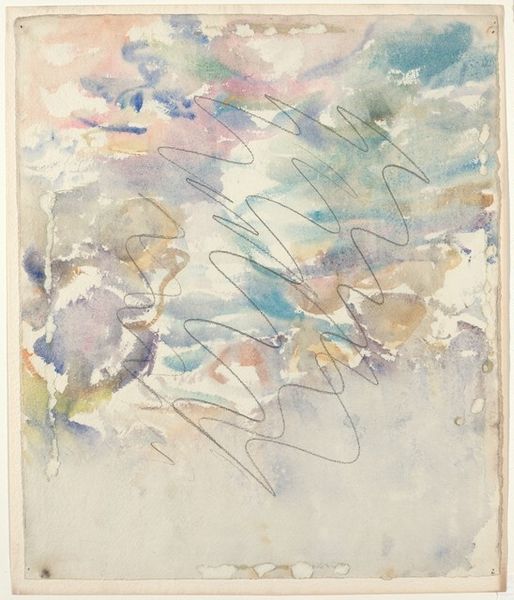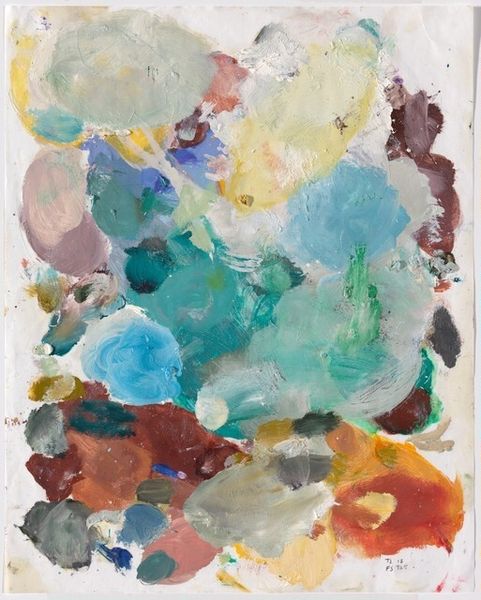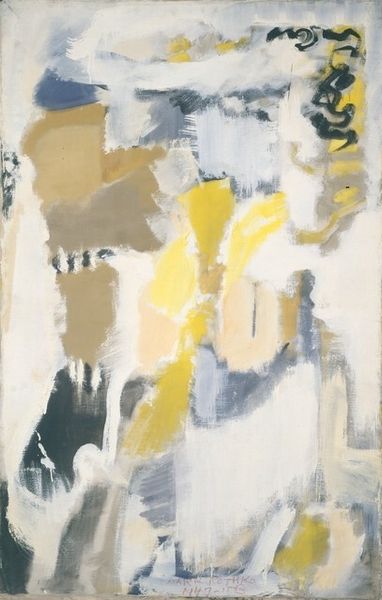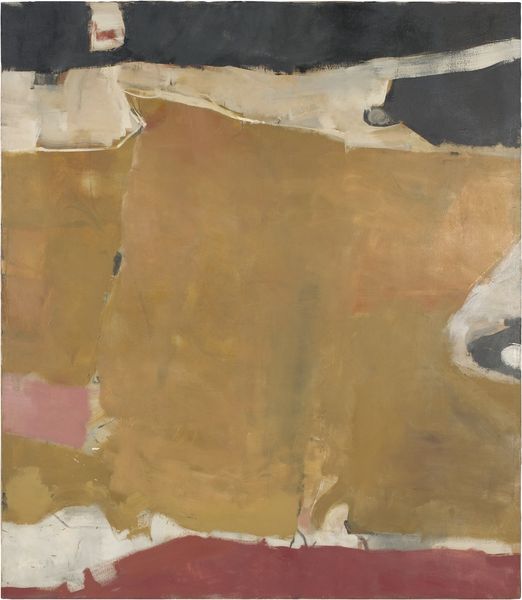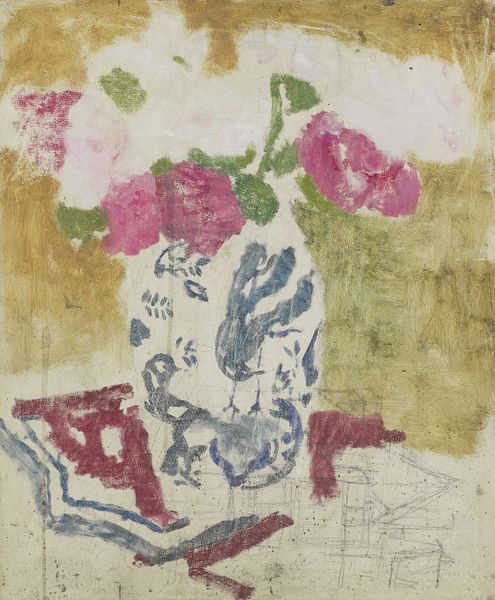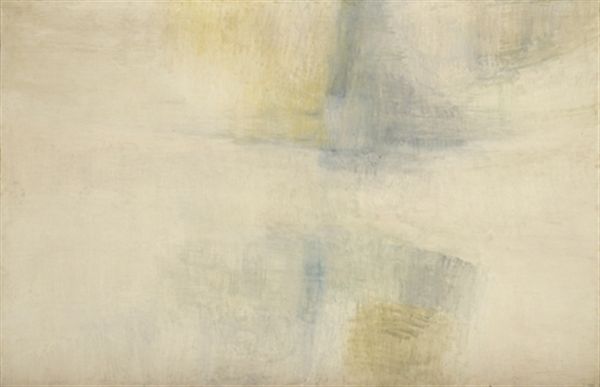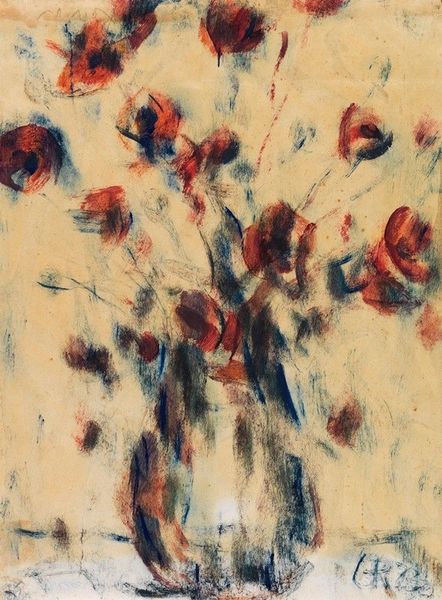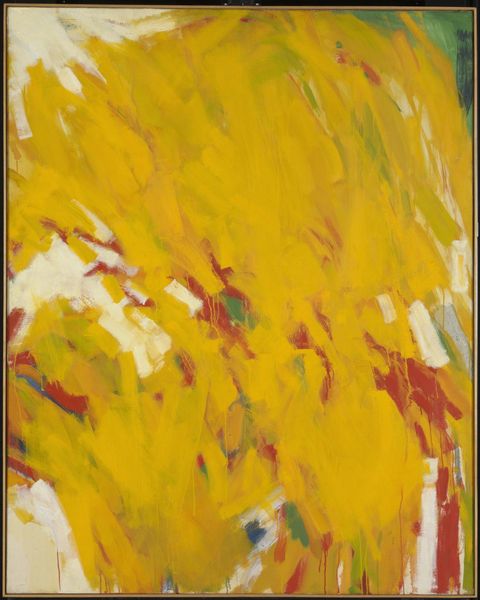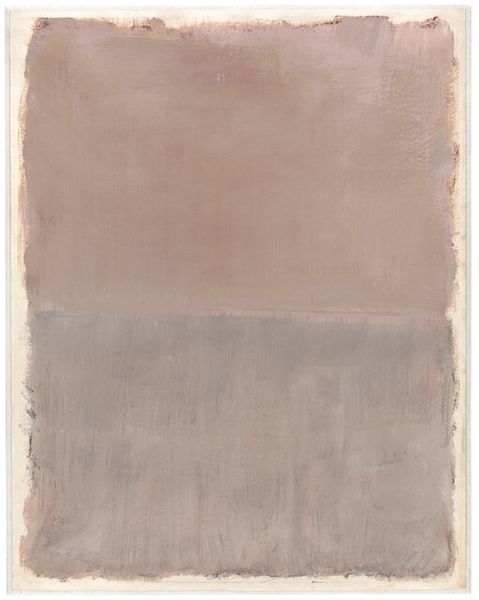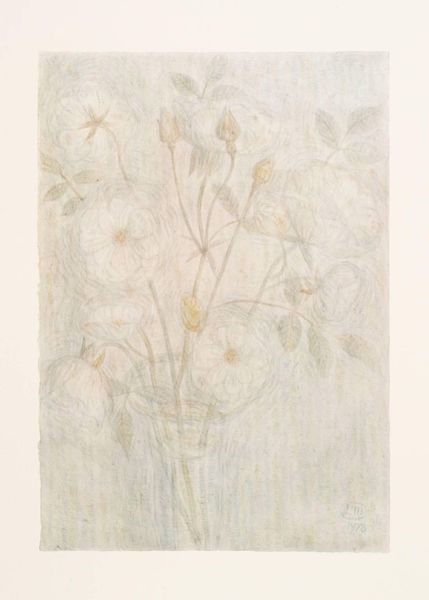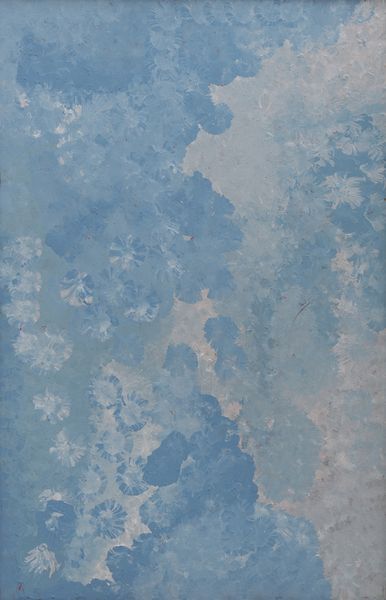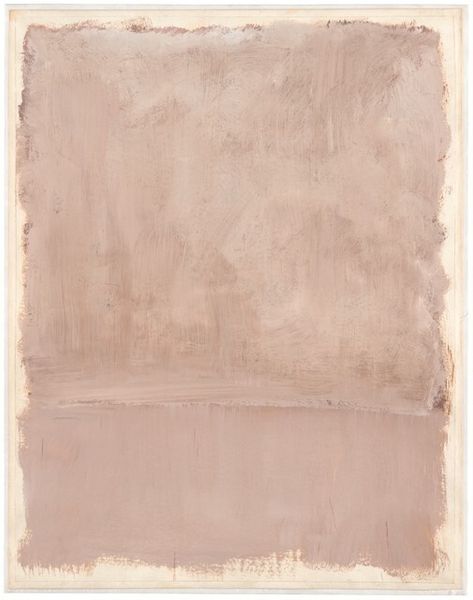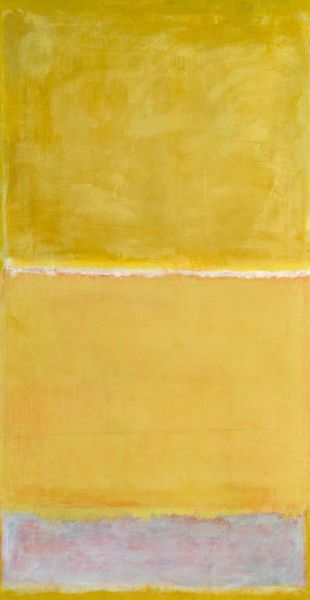
Dimensions: 40 x 45 cm
Copyright: Ilse D'Hollander,Fair Use
Editor: This is an untitled work by Ilse D'Hollander from 1995. It seems to be primarily watercolor and ink. I'm immediately drawn to the soft, almost dreamlike quality. The composition feels very delicate. How do you read this piece? Curator: Well, let’s consider the materiality first. D'Hollander's use of watercolor and ink – rather than, say, oils – speaks to a deliberate choice, wouldn't you agree? Ink allows for linear gestures, precise outlining, even graphic qualities when used in high concentrations. Watercolor, on the other hand, lends itself beautifully to a diffused aesthetic, as evidenced by the visible blooms and washes within. How does the application of each medium challenge, or reinforce the composition of the other, in your view? Editor: I notice the ink creates little accents and anchors of definition, like a frame, contrasting with the airy, fading washes of the watercolor, it directs my eyes through the painting. Are you suggesting that the use of watercolor indicates some inherent statement the artist wants to share about her world? Curator: Perhaps not 'inherent', as such, but her working methods and material decisions reflect certain ideological perspectives within art production. D’Hollander, throughout her practice, resisted notions of established traditions and fine art making through her treatment of domestic scenes. Consider this resistance as extending from not only her subject, but also her process, like a gesture of reclamation in defining her space, her practice. Editor: I see that. So, instead of thinking of it as a simple landscape or abstract piece, it is a deeper conversation happening regarding labor? Curator: Exactly. How she handled these modest materials and resisted hierarchical medium-specificity tells a story. Perhaps about blurring boundaries, and embracing experimentation in ways that challenge our preconceptions. Editor: I see the importance now of viewing this painting as something crafted by intention, with a dialogue around process, labor and materiality, rather than a flat image alone. Curator: Indeed, it provokes a greater discussion around process, medium and how we define art, while engaging social context with fresh eyes.
Comments
No comments
Be the first to comment and join the conversation on the ultimate creative platform.
